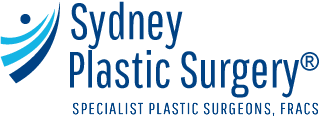Ear pinning (Otoplasty)
Otoplasty, or ear surgery, is sometimes called ear pinning and is used to treat a condition in which one or both ears are more prominent than usual.
The surgery works by repositioning prominent ears closer to the head, improving the shape of the ears or reducing ear size.
To find out if surgery is right for you, book a consultation with Dr Barnouti in one of our three Sydney clinics:
Ear Correction
Before After Photos
Planning your surgery
What will happen during my consultation?
We encourage you to bring your partner, a family member or friend to your initial surgery consultation if you wish.
During your consultation, our plastic surgeon, Dr. Barnouti, will take your full medical history, including any history of excessive bleeding or slow wound healing.
Dr Barnouti will then conduct a general assessment of the ears, including asymmetries and other irregularities, which will be noted and discussed with you. Generally, auricles should measure 5-6 cm in height, and the long axis should recline approximately 20° from the vertical plane. The auricle should diverge from the occipital scalp at no wider than a 35° angle, and the antihelix should form a 75-105°angle between the scaphoid fossa and the concha. Dr Barnouti will be able to explain these principles of otoplasty correction during your ear surgery consultation.
Dr Barnouti will also discuss your goals and lifestyle in detail to determine whether you are a suitable candidate for otoplasty and to help you understand the care needed after your ear surgery.
If you are a suitable candidate for otoplasty, pre-ear surgery photos will be taken in frontal, lateral, and oblique positions.
You can get more information about otoplasty or ear surgery during a private consultation at one of our Sydney clinics.
To find out more about whether ear-pinning otoplasty plastic surgery is right for you, book a consultation with Dr Barnouti in Sydney today.
What happens during surgery?
Otoplasty correction surgery will be different in each unique case, but to correct prominent ears the surgeon makes a small incision on the back of the ear to expose the cartilage. The cartilage is then folded towards the head, and the ear is stitched back to hold it in its new position. If the ears are very prominent, some cartilage may be removed during ear surgery.
An otoplasty usually takes between 90 and 120 minutes, and the resulting scars are behind the ear..
What happens after surgery?
A large bandage need only be worn for the first few days after your otoplasty; after that, it will be replaced with a lighter dressing similar to a hair band.
Stitches are typically dissolvable so they don’t need to be removed. Otoplasty causes very little bruising or swelling, but the wound will be checked after a week to make sure it is healing well.
What are the risks associated with this procedure?
Plastic surgery, like any surgical procedure, carries inherent risks and potential complications.
Please read our Risks and Complications of Plastic Surgery page.
How soon can I go back to work and resume my normal activities?
You can return to work almost immediately after your otoplasty, even the day after your ear surgery, if you wish. However, additional care should be taken to avoid activities where the ear may be pulled or bent for the first month.
Call us on free phone 1300 002 006 if you are outside Sydney or 9561 0222 if you’re in the Sydney area

